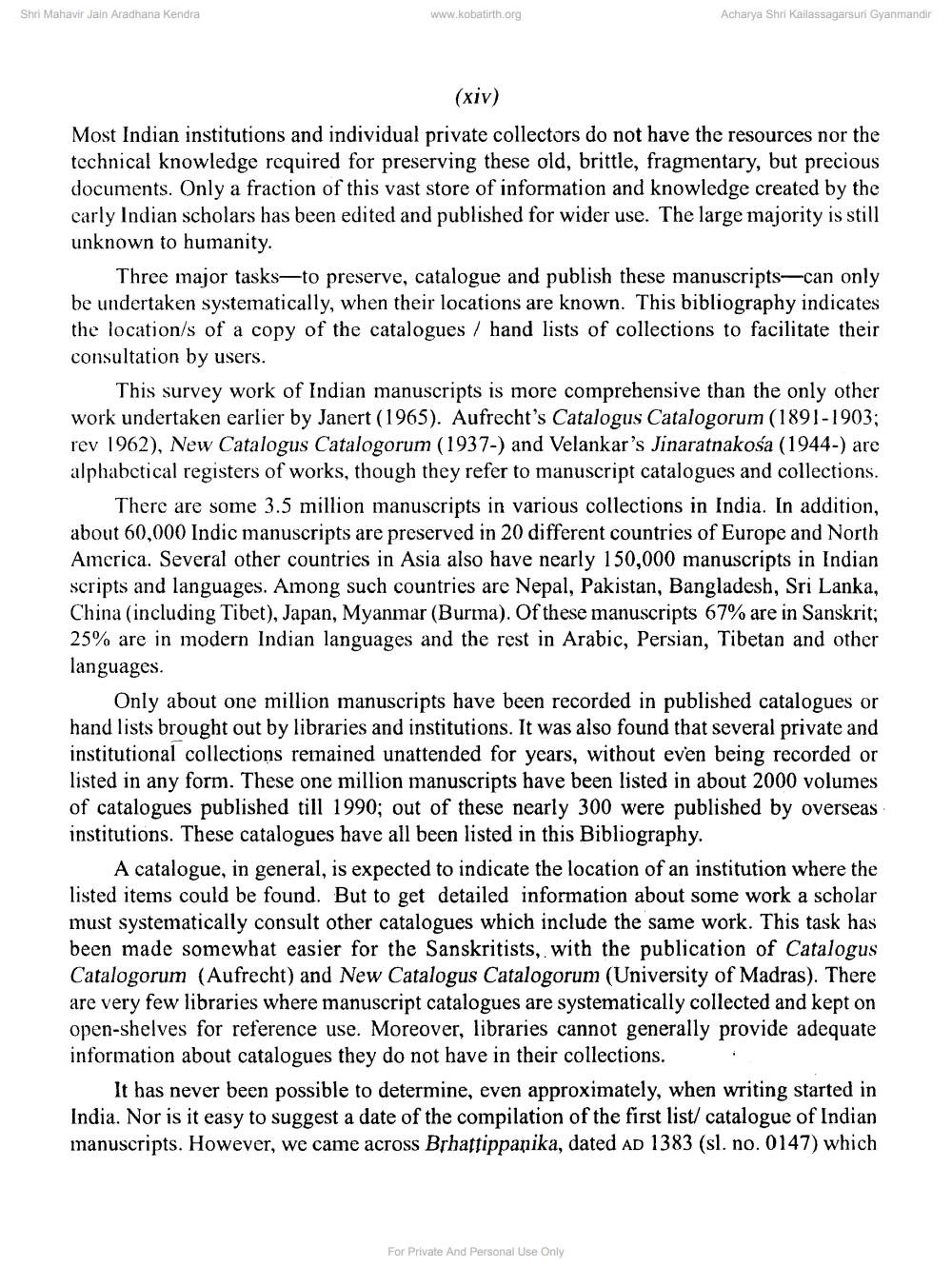________________
Shri Mahavir Jain Aradhana Kendra
www.kobatirth.org
Acharya Shri Kailassagarsuri Gyanmandir
(xiv) Most Indian institutions and individual private collectors do not have the resources nor the technical knowledge required for preserving these old, brittle, fragmentary, but precious documents. Only a fraction of this vast store of information and knowledge created by the carly Indian scholars has been edited and published for wider use. The large majority is still unknown to humanity.
Three major tasks—to preserve, catalogue and publish these manuscripts-can only be undertaken systematically, when their locations are known. This bibliography indicates the location/s of a copy of the catalogues / hand lists of collections to facilitate their consultation by users.
This survey work of Indian manuscripts is more comprehensive than the only other work undertaken earlier by Janert (1965). Aufrecht's Catalogus Catalogorum (1891-1903; rev 1962), New Catalogus Catalogorum (1937-) and Velankar's Jinaratnakosa (1944-) are alphabetical registers of works, though they refer to manuscript catalogues and collections.
There are some 3.5 million manuscripts in various collections in India. In addition, about 60,000 Indic manuscripts are preserved in 20 different countries of Europe and North America. Several other countries in Asia also have nearly 150,000 manuscripts in Indian scripts and languages. Among such countries are Nepal, Pakistan, Bangladesh, Sri Lanka, China (including Tibet), Japan, Myanmar (Burma). Of these manuscripts 67% are in Sanskrit; 25% are in modern Indian languages and the rest in Arabic, Persian, Tibetan and other languages.
Only about one million manuscripts have been recorded in published catalogues or hand lists brought out by libraries and institutions. It was also found that several private and institutional collections remained unattended for years, without even being recorded or listed in any form. These one million manuscripts have been listed in about 2000 volumes of catalogues published till 1990; out of these nearly 300 were published by overseas institutions. These catalogues have all been listed in this Bibliography.
A catalogue, in general, is expected to indicate the location of an institution where the listed items could be found. But to get detailed information about some work a scholar must systematically consult other catalogues which include the same work. This task has been made somewhat easier for the Sanskritists, with the publication of Catalogus Catalogorum (Aufrecht) and New Catalogus Catalogorum (University of Madras). There are very few libraries where manuscript catalogues are systematically collected and kept on open-shelves for reference use. Moreover, libraries cannot generally provide adequate information about catalogues they do not have in their collections. :
It has never been possible to determine, even approximately, when writing started in India. Nor is it easy to suggest a date of the compilation of the first list/ catalogue of Indian manuscripts. However, we came across Brhattippanika, dated AD 1383 (sl. no. 0147) which
For Private And Personal Use Only




